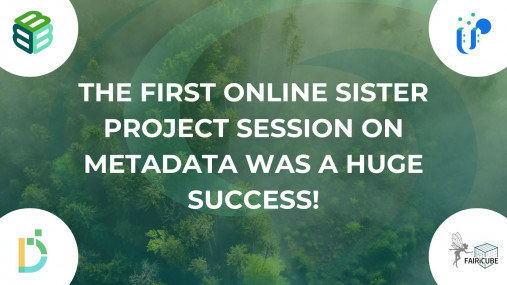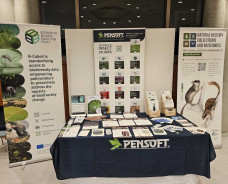This blog post was originally published on the AD4GD website.
As we explained in a previous blog post, the so called Sister Projects of the EuroGEO Action Group on the Green Deal Data Space (AD4GD, FAIRiCUBE, USAGE and B-Cubed) launched a common effort on a joint approach for metadata concepts on GeoDataCubes. On Tuesday 17th September the start of these efforts was crystallised through a virtual workshop with participants from the 4 projects in which technical aspects of metadata were discussed.
The meeting started with a presentation by a representative of each project explaining the current situation and where each project is heading in terms of metadata. At this moment, AD4GD and USAGE are utilizing the spatial metadata specification from ISO 19115, while the FAIRiCUBE project is using the new SpatioTemporal Asset Catalog STAC, and B-Cubed has been concentrating on the functionality that the EBV GeoBon portal provides as well as the DarwinCore based metadata systems provided by GBIF.
After these presentations, it was time to try to bridge the gap. Due to the diversity of systems used and the overall complexity of the international landscape on this issue, it was concluded that currently it is impossible to present a single model approach. As a consequence, we decided to investigate DCAT and GeoDCAT as foundational structures that could facilitate harmonization across different approaches to metadata provision after deliberating extensively.
Although most existing metadata properly cover basic concepts, particularly when addressing gridded products, some pain points were also identified, and the following areas were highlighted as needing further attention:
- Details on the cell components: especially when dealing with gridded data beyond raw satellite data, details on what exactly is being provided in the data payload becomes sparce. Insights from terrestrial geospatial systems and recent developments on Observable Property models would be a valuable addition.
- Data Provenance: too often, data is provided without concise provenance information detailing underlying source data and processing steps applied. Integration of the W3C PROV-O Ontology would help to bridge this gap.
- Data Quality: in order to provide dependable outputs, source data must be well vetted to assure that it is of necessary quality. Data quality metrics are often not provided together with available data. Both structures and examples would be most welcome.
To continue working on this joint initiative, we have organised a face-to-face workshop in Vienna on 30 September and 01 October. The event aims to work on these identified weaknesses and to translate this into one or several Policy Briefs detailing some of the requirements for the future creation of the GDDS.



